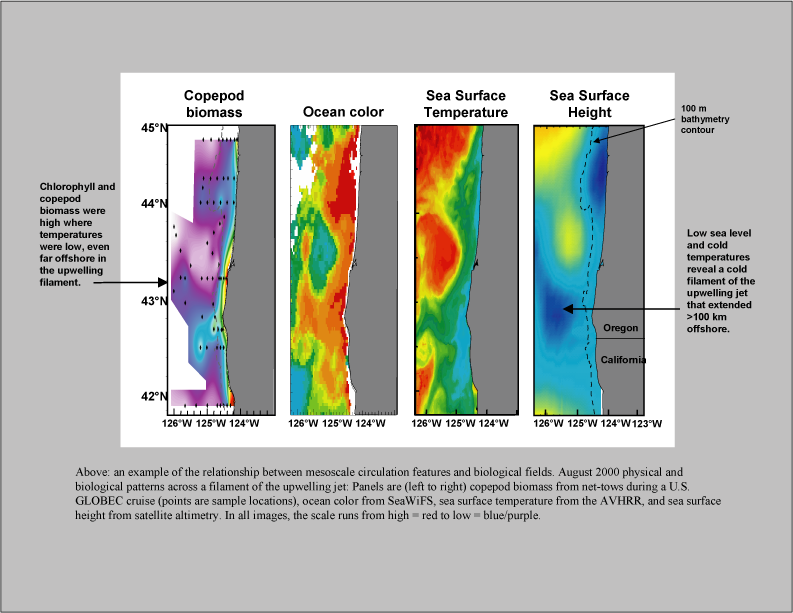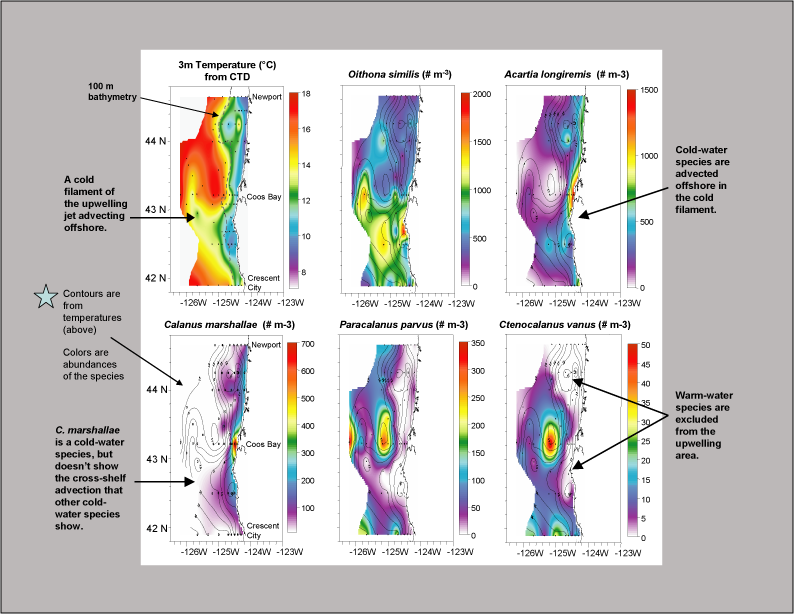U.S. GLOBEC Mesoscale variability:
Mesoscale circulation features such as eddies and filaments advect zooplankton across the continental shelf to the deep sea in the California Current System. The figures below illustrate the importance of advection in controlling biological distributions. The zooplankton data come from one of the "Mesoscale" cruises conducted in August 2000 as part of the U.S. GLOBEC Northeast Pacific field program.

Part of my research examined the ways that the circulation patterns differently effect distributions of individual species of zooplankton. Not all species respond similarly to advection. Some of the smaller and more abundant species act like passive tracers of the circulation (e.g. Oithona similis and Pseudocalanus mimus, small cold-water copepods) whereas some larger species only show a weak correspondence to the physical patters (e.g. Calanus marshallae, a large cold-water copepod) indicating that biological processes such as vertical migration or mortality may be more important in controlling their distributions. An on-going goal of my research is to understand the relative importance of physcial versus biological factors in controlling zooplankton distributions and the potential implications to zooplankton populations, predator populations, and the global carbon cycle.

To examine the ways that circulation varies on intra- and inter-annual timescales, I studied variability in sea surface height (SSH) using satellite altimetry. The energy and spatial patterns of mesoscale circulation are influenced by climate dynamics in the Northeast Pacific. To address one of the main goals of our GLOBEC research program, I developed an index of mesoscale energy in the northern California Current System using wavelet analyses of SSH patterns from 1993-2006. I compared this index to the abundance of coastal zooplankton to find that interannual variability in both the circulation and zooplankton biomass contribute to the flux of biomass across the shelf to the open ocean.

